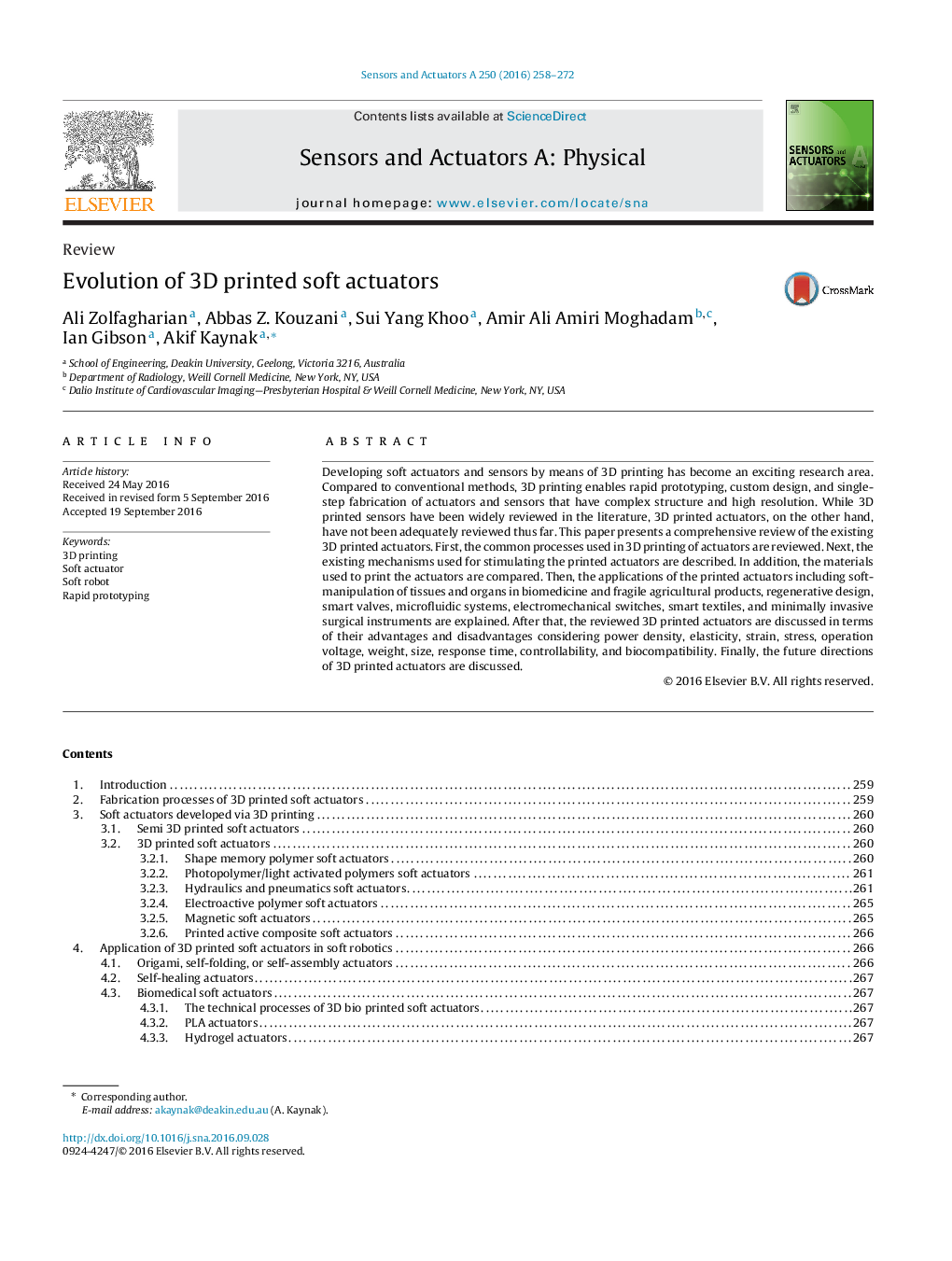| Article ID | Journal | Published Year | Pages | File Type |
|---|---|---|---|---|
| 5008576 | Sensors and Actuators A: Physical | 2016 | 15 Pages |
Abstract
Developing soft actuators and sensors by means of 3D printing has become an exciting research area. Compared to conventional methods, 3D printing enables rapid prototyping, custom design, and single-step fabrication of actuators and sensors that have complex structure and high resolution. While 3D printed sensors have been widely reviewed in the literature, 3D printed actuators, on the other hand, have not been adequately reviewed thus far. This paper presents a comprehensive review of the existing 3D printed actuators. First, the common processes used in 3D printing of actuators are reviewed. Next, the existing mechanisms used for stimulating the printed actuators are described. In addition, the materials used to print the actuators are compared. Then, the applications of the printed actuators including soft-manipulation of tissues and organs in biomedicine and fragile agricultural products, regenerative design, smart valves, microfluidic systems, electromechanical switches, smart textiles, and minimally invasive surgical instruments are explained. After that, the reviewed 3D printed actuators are discussed in terms of their advantages and disadvantages considering power density, elasticity, strain, stress, operation voltage, weight, size, response time, controllability, and biocompatibility. Finally, the future directions of 3D printed actuators are discussed.
Related Topics
Physical Sciences and Engineering
Chemistry
Electrochemistry
Authors
Ali Zolfagharian, Abbas Z. Kouzani, Sui Yang Khoo, Amir Ali Amiri Moghadam, Ian Gibson, Akif Kaynak,
